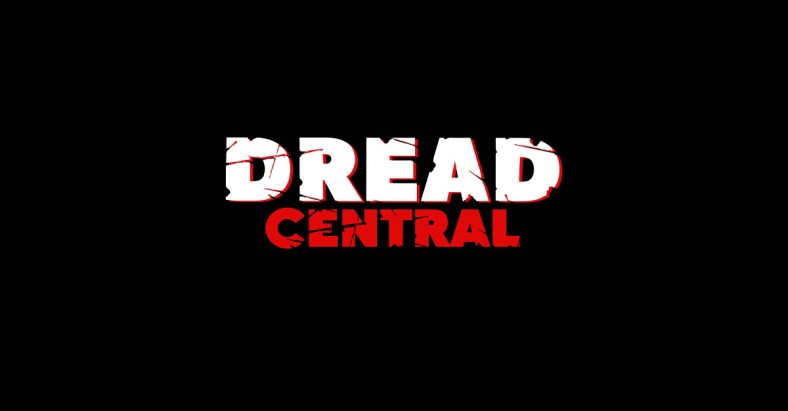THE BANISHING Review – A Psychologically Engaging New Haunted House Film


The Banishing starring Jessica Brown Findlay, John Lynch, John Heffernan, Sean Harris
Directed by Christopher Smith
The Banishing is a disquieting haunted house film that focuses on character and psychology. The haunted house film is a subgenre with which it’s pretty difficult to do anything new, so the focus on the inner lives of the characters is a good idea, since the story tends to veer toward pretty familiar territory.
Directed by Christopher Smith (Black Death) from a script by David Beton, Ray Bogdanovich, and Dean Lines, The Banishing is supposedly based on a true story. But you know how that goes with horror movies. It’s very loosely based on the Borley Rectory hauntings. But the location and some of the characters are a starting point.
Not much more.
RELATED: Trailer: Christopher Smith’s THE BANISHING Tells the Story of the Most Haunted House in England
The movie opens with the rectory’s vicar murdering his wife while observing himself killing her. Indeed, there are two identical copies of him in the room, something that will be a recurring trope, and one of the film’s more interesting themes.
A short time after the vicar kills his wife, he hangs himself. Along comes the local bishop, Malachi (John Lynch), who orders an underling to bury the bodies underneath the building, which is a strange ask even under the best of circumstances.
Okay, so we’re off to a nice start. Cut to three years later and the arrival of a new vicar. Linus (John Heffernan) comes to take over the operation, bringing along his new wife Marianne (Jessica Brown Findlay), and her young daughter Adelaide (Anya McKenna-Bruce). Soon, little Adelaide is talking to an invisible new friend. She’s also found some creepy porcelain dolls and some eerie-looking monk figurines. Is her friend imaginary or something more sinister? It’s a ghost. Of course, it’s a ghost.
RELATED: SAM & MATTIE MAKE A ZOMBIE MOVIE Review – The Journey Is More Important Than The Destination In This Wild Documentary
Linus is a religious nerd that gives new meaning to the word prude. He’s all hung up on sex, specifically as it relates to sin and his immortal soul. One would think this wouldn’t be a problem, since he just legally wed, but this doesn’t keep him from being completely unable to consummate his relationship. Coincidentally, or maybe not, the previous vicar also had similar hangups. Does this house just attract men who have beautiful wives and severe sexual hangups? Perhaps.
Malachi, the bishop, makes for an interesting enough villain. But he’s oh-so-obviously evil. So much so that he’s kind of flat, just short of a cartoon villain twisting his mustache and plotting his next scheme. The way he’s written, the guy’s barely an actual person. But Lynch is so great in the role, with his broody baritone voice and menacing good looks, that you forget about all that and enjoy watching the guy.
And then there’s the walking red herring, Harry Price (Sean Harris), who, well, literally has bright red hair. He’s set up to be a questionable sort of guy. Supposedly a creepy dude. But you can see where the character is going from the beginning. The one exception is a genuinely disturbing scene during the opening credits that plants the seed that maybe the guy will end up as the film’s Big Bad. But that’s only temporary.
RELATED: THE POWER Review–Haunted Hospital Has Searing Commentary
The Banishing takes place in Britain on the eve of World War II. And the Nazi thing is constantly brought up for reasons I still haven’t figured out. A Nazi conspiracy and weak message about the dangers of passivism in an existential haunted house film? Nah, I’ll pass. The main story is enough. Nazies are evil. We get that. We don’t need to make the villains of a haunted house movie actual Nazies to understand they’re evil.
But the film is so visually and psychologically engaging that none of that really matters too much. I mean, story always matters in narrative film. So the generic nature of the script, the ending excepted, should definitely be taken into account. But as I watched the film, I found myself just caught up in the vortex of the thing. The dream / hallucination / supernatural sequences (it’s never clear which is which during a given scene) are top-notch, highlighting the divided nature of the characters’ psyches. They’re living dual, sometimes triple lives, doing two or more things at once, with multiple copies of themselves wandering the house at once.
Sometimes you’re not even sure which is the “real” character. And in the end it doesn’t matter too much. It’s all about how the characters interact with their shadow material. In addition to there being at least one malevolent ghost in the house, they’re haunting themselves. We’re never quite sure which side of the mirror we’re on, and sometimes neither do the characters themselves.
RELATED: Panic Fest 2021: THE DJINN Review–A Boy and His Djinn
Now that’s the stuff I’m here for. The meat-and-potatoes of a given script don’t have to be the most important thing in a visual medium. I realize I’m probably in the minority, with my attraction to visual experimentation. So your milage might vary.
The last act is wonderfully intense and makes up for much of the script’s earlier shortcomings. Deranged, brutal, surreal, and dark. It enters the mirror world teased throughout the earlier parts. It’s a visually exciting conclusion to a pretty mundane story, making The Banishing interesting and exciting from beginning to end.
Will you peep Christopher Smith’s THE BANISHING when it arrives on Shudder this Thursday, April 15th? Let us know below or on Facebook, Twitter, or Instagram!
-
THE BANISHING
Summary
The Banishing is a relatively straightforward haunted house story that excels in exploring character psychology.

